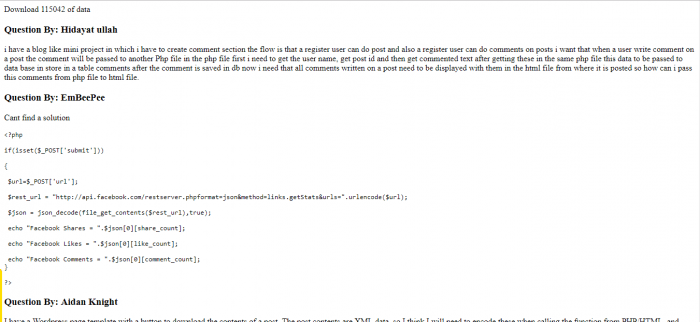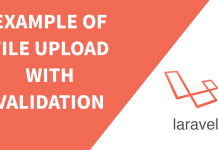Guzzle is a PHP HTTP client that makes it easy to send HTTP requests and trivial to integrate with web services. I am going to show step by step tutorial using Guzzle with Laravel. With guzzle, we will send http request to server and get http response. It is alternate to CURL which provide more features along with easy user interface. Different methods you can send with Guzzle are GET, DELETE, HEAD, PATCH, POST and PUT. Now, let’s get start integrating with laravel.
Install Guzzle
You can install Guzzle using composer
composer require guzzlehttp/guzzle
We can now use Guzzle Client class in our application.
Configure Route
You can use on your own. For now, I am defining a route and execute http request from controller. So, let’s define our route for sending a request to server.
Route::get('test-request-with-guzzle', 'GuzzleController@index');
Create Controller
Let’s create a new controller to test our Guzzle integration on our application. Simply run the following command inside of your project folder.
php artian make:controller GuzzleController
Modify Controller
Now, let’s open our newly created controller and make some changes. I have commented each line to help you understand the code. Our controller now looks like below:
Output:
Post Request using Guzzle
You can simply send post request like below:
public function postGuzzleRequest() { $client = new Client(); $url = "http://myexample.com/api/posts"; $myBody['title'] = "This is a title"; $request = $client->post($url, ['body'=>$myBody]); $response = $request->send(); }Put Request using Guzzle
public function putGuzzleRequest() { $client = new Client(); $url = "http://myexample.com/api/posts/1"; $myBody['title'] = "This is a title"; $request = $client->put($url, ['body'=>$myBody]); $response = $request->send(); dd($response); }Delete Request using Guzzle
public function deleteGuzzleRequest() { $client = new \GuzzleHttp\Client(); $url = "http://myexample.com/api/posts/1"; $request = $client->delete($url); $response = $request->send(); dd($response); }Async Requests
public function promiseGuzzleRequest() { $client = new Client(['base_uri' => 'http://httpbin.org/']); // Initiate each request but do not block $promises = [ 'image' => $client->getAsync('/image'), 'png' => $client->getAsync('/image/png'), 'jpeg' => $client->getAsync('/image/jpeg'), 'webp' => $client->getAsync('/image/webp') ]; // Wait on all of the requests to complete. Throws a ConnectException // if any of the requests fail $results = Promise\unwrap($promises); // Wait for the requests to complete, even if some of them fail $results = Promise\settle($promises)->wait(); // You can access each result using the key provided to the unwrap // function. echo $results['image']['value']->getHeader('Content-Length')[0]; echo $results['png']['value']->getHeader('Content-Length')[0]; }You can send asynchronous request using Guzzle.
$promise = $client->getAsync('http://examlple.com/get'); $promise = $client->postAsync('http://example.com/post');Concurrent Request
You can also send Concurrent Request using promises and asynchronous requests.
public function promiseGuzzleRequest() { $client = new Client(['base_uri' => 'http://httpbin.org/']); // Initiate each request but do not block $promises = [ 'image' => $client->getAsync('/image'), 'png' => $client->getAsync('/image/png'), 'jpeg' => $client->getAsync('/image/jpeg'), 'webp' => $client->getAsync('/image/webp') ]; // Wait on all of the requests to complete. Throws a ConnectException // if any of the requests fail $results = Promise\unwrap($promises); // Wait for the requests to complete, even if some of them fail $results = Promise\settle($promises)->wait(); // You can access each result using the key provided to the unwrap // function. echo $results['image']['value']->getHeader('Content-Length')[0]; echo $results['png']['value']->getHeader('Content-Length')[0]; }You can find more examples and documentations in detail at this guzzle official documentation.





